Stepping off in the Atlantic Ocean
Published on June 12th, 2017
The Royal Western Yacht Club’s single-handed and two-handed transatlantic race has made headlines as many of the 21 entries competing on the course from Plymouth, England to Newport, Rhode Island have required rescue.
Following the start on May 29 for to mono and multi-hulls between 27 and 60ft in length, the first wave of incidents began in the early hours of June 9 when 60 knot winds and 15 metre seas caused damage to many boats with 3 emergency beacons (EPIRB) triggered.
After the Canadian coastguard in Halifax immediately reacted to the situation by sending ships and air support to all the boats in distress, they were required again a day later when Italian Ostar skipper Michele Zambelli on the nine-metre yacht Illumia encountered keel problems.
Zambelli, 26, was rescued by helicopter 350 nautical miles (650 kilometres) southeast of Newfoundland and Labrador says he’s “tranquillo” now that he’s back on land.
Zambelli said he’s not sure exactly what happened, but he suspects something collided with his boat and broke the keel. He knew he was in real trouble when the Illumia 12 started taking on water on Saturday (Jun 10) night.
“When I look at my boat completely full of water inside … I can’t stay inside because inside only water,” Zambelli said. “Finally you say, ‘Yes, it’s finished. I need to save my life now.'”
It was around midnight that Zambelli set off his emergency beacon and tuned his emergency radio to the international distress frequency, channel 16. When he got an answer on the radio, he was momentarily relieved.
“You think, ‘I’m not alone now. I’m not lonely. Someone know where I am and is here with me.’ … But when you’re in the boat in the night, it is very cold, it is not easy,” he said. “You are afraid, you are very afraid.”
The Joint Rescue Coordination Centre in Halifax dispatched a CH-149 Cormorant helicopter and a CC-130 Hercules from Gander, N.L., to help. The Cormorant had to stop at the Sea Rose offshore oil platform to refuel on the way.
For the next few hours, Zambelli waited in the dark, watching his boat fill with water, hoping to see the lights of the airplane and helicopter that would signal his rescue. That moment came after dawn when the plane and helicopter arrived on scene.
Zambelli said he was “little bit of afraid” when he was told to exit his boat and jump onto his life raft. “You are lonely in the sea, with your little orange boat and the big airplane,” he said.
Maj. Rhonda Stevens of the Joint Rescue Coordination Centre in Halifax said the Cormorant’s crew of five would have needed Zambelli to get out of his boat so that the rope wouldn’t get tangled in the mast. Soon after, a rescuer was lowered from the helicopter by rope onto his lifeboat.
“This is a moment very, very important because now you are very not lonely, now you are with this guy,” Zambelli said. “He look at you in the eyes and you touch.… He give you a system for go up, finally, 3,2,1 bam.”
Zambelli was lifted into the air by a rope attached to a harness.
That moment was “a little bit crazy because you are flying,” he said. “The water around you is all white. … Finally, you close the eyes and someone [takes your] body and give in the helicopter and after close the door and finally it’s finished.”
Zambelli said once he knew he was safe, he looked out of the helicopter at the Illumia 12.
“Your heart is broken. … That’s the last time I see my boat,” he said. “Today is a wonderful life. But … it stay for my life, this last image of my boat with the water inside.”
Stevens said it’s likely the Illumia 12 would have sunk within a few hours. Zambelli said the rescue technician who was lowered to the sea to rescue him was “very, very incredible.”
“What a spirit of … I don’t know, like a brother,” he said.
Stevens said the rescue crew were happy to help, as they do in about 2,500 cases each year.
“It’s very rewarding when the rescues are successful, especially when they’re this challenging offshore,” she said. “They’re very elated of course when the results are positive.”
John Lewis, the race’s director, was notified when the Illumia 12’s emergency beacon was triggered at midnight AT. The response time was “quite remarkable. Within six hours he’d been rescued and was safe,” Lewis said.
Source: CBC News


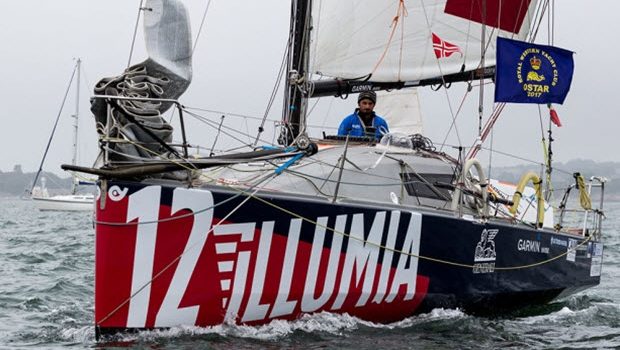


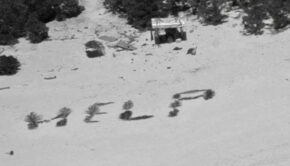
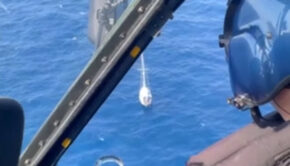
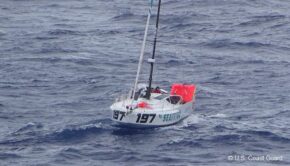
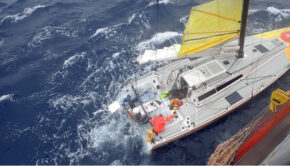
 We’ll keep your information safe.
We’ll keep your information safe.